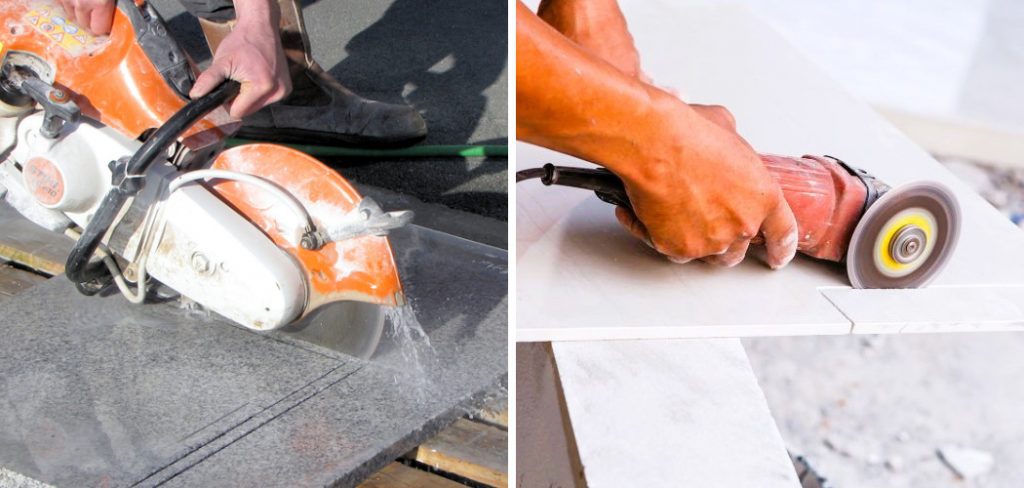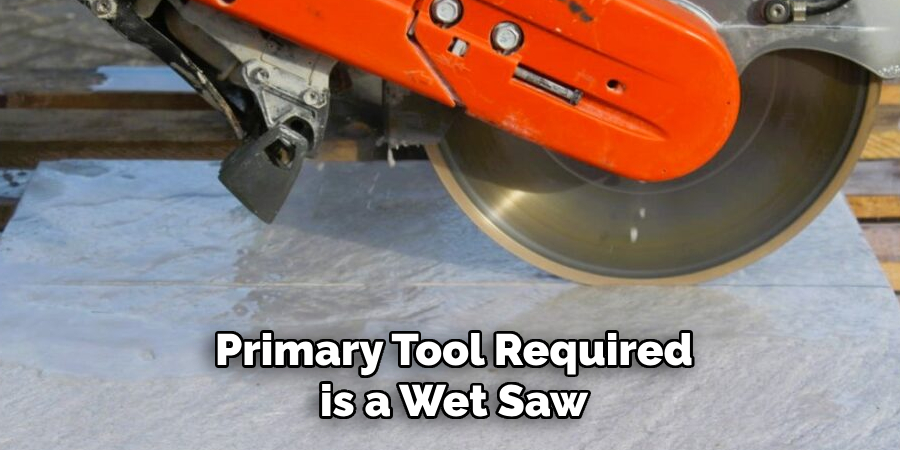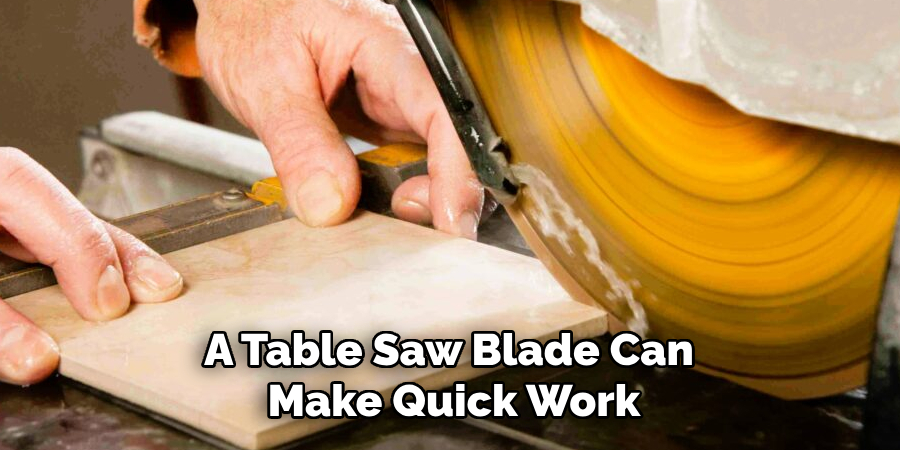Cutting porcelain pavers with precision is essential for achieving a professional finish in any outdoor or indoor project. Porcelain pavers are known for their durability, aesthetic appeal, and resistance to harsh weather conditions, making them a popular choice among homeowners and contractors alike. However, their hardness also presents a cutting challenge, necessitating the use of the right tools and techniques to ensure clean edges and minimize breakage. In this guide, we will explore how to cut porcelain pavers, helping you to execute your project smoothly and effectively.

What Are Porcelain Pavers?
Porcelain pavers are a type of architectural material used for flooring in both indoor and outdoor settings, characterized by their dense composition and high durability. Made from refined clay and other natural materials that are fired at high temperatures, these pavers are designed to withstand wear and tear while maintaining their aesthetic appeal. Available in a variety of colors, sizes, and textures, porcelain pavers mimic the appearance of natural stone, wood, or concrete, making them a versatile option for various design schemes. Due to their non-porous nature, they offer excellent resistance to water, stains, and frost, thus ensuring longevity in diverse climatic conditions. Their slip-resistant surfaces further enhance safety, particularly in areas prone to moisture.
Importance of Accurately Cutting Porcelain Pavers
Accurate cutting of porcelain pavers is crucial for multiple reasons. Firstly, precision cuts ensure a seamless fit, enhancing the overall aesthetic quality of your project. Poorly cut pavers can leave uneven edges and gaps, disrupting the visual harmony of a patio, walkway, or indoor space. Secondly, precise cuts reduce wastage. Given the cost of porcelain pavers, minimizing breakage and the need for replacement pieces can lead to significant savings.

Furthermore, correctly sized and shaped pavers contribute to the structural integrity of the installation, preventing issues such as shifting and settling over time. Whether you are a professional or a DIY enthusiast, the goal is to achieve a flawless, long-lasting result that justifies the investment in high-quality materials.
Benefits of Using Porcelain Pavers
Porcelain pavers offer an array of benefits that make them an ideal choice for various construction projects. Their durability is one of their most significant advantages, as they are resistant to scratches, fading, and wear, providing a long-lasting surface that maintains its appearance over time. Additionally, their low porosity renders them highly resistant to water damage and stains, making them easy to clean and maintain.
Porcelain pavers are also versatile in design, available in a wide range of colors, sizes, and finishes, allowing them to complement any aesthetic preference, from modern to rustic. Their ability to mimic natural materials such as stone or wood adds to their appeal while offering a more cost-effective and environmentally friendly alternative to quarrying new materials. Furthermore, their slip-resistant surfaces make them a safe option for high-traffic areas, including pool decks and walkways. These benefits make porcelain pavers a smart investment for both residential and commercial properties, ensuring beauty, functionality, and ease of maintenance in any setting.
Tools and Materials Needed for Cutting Porcelain Pavers

Successfully cutting porcelain pavers calls for specific tools and materials to ensure precision and minimize imperfections. The primary tool required is a wet saw equipped with a diamond blade designed specifically for cutting hard materials like porcelain. This type of saw uses water to cool the blade and reduce dust, ensuring cleaner cuts and prolonging the tool’s lifespan. In addition to the wet saw, a set of protective gear is essential, including safety goggles, gloves, and ear protection, to safeguard against debris and noise.
A stable workbench or a cutting table provides a secure surface for supporting the pavers during the cutting process. A pencil or non-permanent marker can be used to mark cutting lines, and a measuring tape ensures accurate dimensions. For finishing touches, smoothing tools such as a diamond hand pad or sandpaper are useful for refining edges and achieving a polished look. Having the right combination of tools and materials not only streamlines the cutting process, but also enhances overall safety and efficiency.
10 Effective Methods How to Cut Porcelain Pavers
If you’re looking to revamp your outdoor space with porcelain pavers, you’re not alone. These durable and stylish pavers are a popular choice among DIY enthusiasts, homeowners, and professional landscapers. However, cutting porcelain pavers can be a daunting task if you don’t know where to start. This guide will walk you through ten proven methods to make precise cuts, ensuring your paving project looks professionally done.
1. Wet Saw Cutting
Wet saws are one of the most effective tools for cutting porcelain pavers. Equipped with a diamond blade, these saws use water to minimize dust and cool the blade, preventing it from overheating.
- Advantages: Provides clean and precise cuts; great for larger projects.
- Tip: Ensure the water supply is adequate to keep the blade cool and extend its lifespan.
2. Angle Grinder
An angle grinder with a diamond-tipped blade is perfect for detailed work or irregular cuts. It’s a versatile tool that can handle both straight and curved cuts.

- Advantages: Ideal for detailed and intricate work; portable and easy to maneuver.
- Tip: Always wear protective eyewear and a dust mask when operating an angle grinder.
3. Tile Cutter
A manual tile cutter is a budget-friendly option for small-scale projects. It scores the surface of the paver, allowing you to snap it along the scored line.
- Advantages: Cost-effective; no electricity needed.
- Tip: Best for straight cuts on smaller tiles; ensure the scoring wheel is sharp for clean results.
4. Wet Tile Saw
Similar to a wet saw but designed specifically for tiles, the wet tile saw combines precision with ease of use, making it a favorite for both DIYers and professionals.
- Advantages: Excellent for repetitive cuts; keeps the dust down with water cooling.
- Tip: Regularly check the alignment of the blade to maintain accuracy.
5. Masonry Saw
For those tackling large projects, a masonry saw offers robust performance. These heavy-duty saws are perfect for cutting through thick porcelain pavers.
- Advantages: High power; suitable for cutting thick materials.
- Tip: Ensure you have the correct blade type for porcelain to prevent chipping.
6. Jigsaw
While not as common, a jigsaw with a carbide-grit blade can be used for cutting porcelain pavers, particularly for making curved shapes.
- Advantages: Great for curves and creative designs.
- Tip: Keep the blade speed moderate to avoid overheating and ensure a smooth cut.
7. Score and Snap Method
This method involves scoring the paver with a strong utility knife or a carbide-tipped pen and then snapping along the score line. It’s an old-school method but effective for thin pavers.
- Advantages: Simple and requires minimal tools.
- Tip: Use a straight edge or guide to ensure the score line is exact.
8. Circular Saw
With the right blade, a circular saw can cut through porcelain pavers with precision. It’s a good alternative if you already have one in your toolkit.
- Advantages: Versatile and widely available; useful for long cuts.
- Tip: Always use a diamond blade and make multiple passes instead of forcing a single cut.
9. Table Saw
For a workshop setting, a table saw equipped with a diamond blade can make quick work of cutting porcelain pavers.

- Advantages: Stable and efficient for straight cuts.
- Tip: Adjust the blade height so that it barely clears the paver to avoid chipping.
10. Hire a Professional
If all else fails, or if you’re working on a large-scale or high-stakes project, hiring a professional may be the best option to ensure seamless results.
- Advantages: Expertise and experience can prevent costly mistakes.
- Tip: Get a few quotes to ensure competitive pricing.
Things to Consider When Cutting Porcelain Pavers
When embarking on a project involving porcelain pavers, several factors require careful consideration to ensure success. Firstly, assess the level of your experience with cutting tools. If you’re a beginner, you may want to start with simpler methods or seek assistance. Additionally, consider the thickness and size of the pavers; these will influence the choice of tools and methods. The environmental conditions should also be considered; working in a well-ventilated area is critical to manage dust, especially when using dry-cutting tools. Ensure you have all necessary protective equipment, such as gloves, goggles, and ear protection, to minimize the risk of injury. Plan your layout meticulously, allowing for precise cuts and minimal waste, and always have a backup plan, including extra pavers, for potential errors. By considering these factors, you can achieve a more efficient and safe cutting process.
Conclusion
Cutting porcelain pavers can seem challenging at first, but with the right tools and techniques, it becomes a manageable task that can be completed with precision and skill. Whether you’re a DIY enthusiast or a professional landscaper, understanding the various methods available allows you to choose the best option for your specific project needs. By considering the factors that influence cutting success and following proper safety protocols, you can ensure your outdoor space transforms beautifully and efficiently. Thanks for reading, and we hope this has given you some inspiration on how to cut porcelain pavers!
Specialization:
- Master of wheel-throwing, hand-building, and advanced glazing techniques
- Focus on creating both functional pottery and decorative art pieces
Recognition:
- Celebrated by collectors and art enthusiasts for creating one-of-a-kind pieces that blend artistry with functionality
- Participates in local and national exhibitions, earning accolades for his innovative designs and craftsmanship
Passion:
- Deeply committed to exploring and pushing the boundaries of ceramic artistry
- Continuously experiments with new materials, firing techniques, and artistic concepts to evolve his craft
Personal Philosophy:
- Believes in the transformative power of art, aiming to evoke emotions and connections through his ceramic creations
- Advocates for sustainability in ceramics, using eco-friendly materials and practices whenever possible


